Developers have had to to get creative when it comes to salvaging America’s failing shopping centers, turning them into hospitals, churches, and even parks.

In case you haven’t heard, suburban malls are on the way out (sorry Paul Blart). Some have become abandoned wastelands popular for ruin porn. Others have been torn down and turned into industrial sites.
According to Ellen Dunham-Jones, an architect and professor at Georgia Tech, there are about 1,200 enclosed malls in the United States, and about one-third of them are dead or dying. That’s because developers rapidly overbuilt malls in the 20th century, she said: The U.S. has twice as much square footage in shopping centers per capita than the rest of the world, and six times as much as countries in Europe.
“The malls died for a reason,” she told me. “We were way over-retailed.”
As anchor brands such as JC Penney, Sears, and Macy’s close stores and Americans show a preference for shopping online or in walkable urban centers, more malls are expected to close.
But there is good news: In many areas of the country developers are finding new uses for dead malls. Dunham-Jones keeps a database of projects that retrofit dying malls for other purposes, and says that there are 211 spaces across the country being retrofitted in one way or another.
From our partners:
“Malls are being turned into medical centers, colleges, elementary schools, churches,” she said.
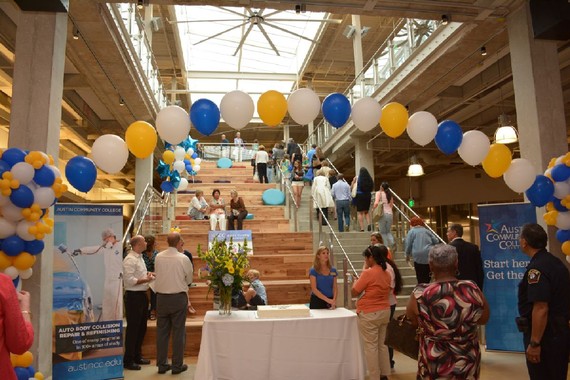
The Highland Mall in Austin, Texas, for instance, was named one of “America’s Most Endangered Malls” by U.S. News & World Report in 2009. One of the first suburban malls in Austin, the shopping center opened in 1971 covering 81 acres, and had 1.2 million square feet of interior space. By 2010, though, nearly all of the stores were vacant.
The administrative offices of Austin Community College (ACC) were located right on the edge of the mall. It became frustrating to watch the anchor stores leave and the area become more and more economically depressed, Richard Rhodes, the president and CEO of ACC said in an interview.
“What happens when a mall begins to deteriorate and no longer function as a mall?” he said. “In the surrounding neighborhoods, you begin to see the crime rate increase, other homes and buildings being vacated—the whole community surrounding it begins to deteriorate.”
The college decided to step in and purchase the mall, with a plan to make the buildings a centerpiece of a planned, mixed-use community. It worked with Barnes Gromatzky Kosarek Architects, who took a former JC Penney building and made it into what Rhodes calls “the galaxy’s largest learning emporium,” which has 604 computer stations, 200,000 square feet of instructional space, a library, and offices.
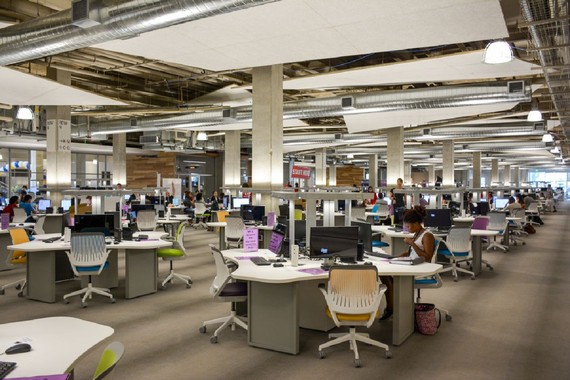
The architects knocked out portions of the roof to put in a big skylight and created more natural light inside the mall.
The space formerly “looked like a World War II bunker,” Rhodes told me.
Then, in November’s elections, voters in Austin approved two bond propositions that will fund $386 million in construction for the college. Much of that money will go to renovating the mall further to create a regional-workforce center, a STEM simulator lab, a digital-media center, and a culinary and hospitality center. The college plans on putting restaurants into the space that are managed by the students so they can get real-world experience, Rhodes said.
Last summer, the college entered into a partnership with San Antonio-based cloud-management company Rackspace to move 570 employees into an area that was formerly a Dillard’s, which will allow students to intern at the company as well.
Construction is still underway, but the changes have already been making a difference, Rhodes said.
“Just since we’ve started construction, we’ve seen the surrounding community improve,” he said. “New businesses opened up and vacant businesses have been purchased. It’s turning around the local neighborhood.”
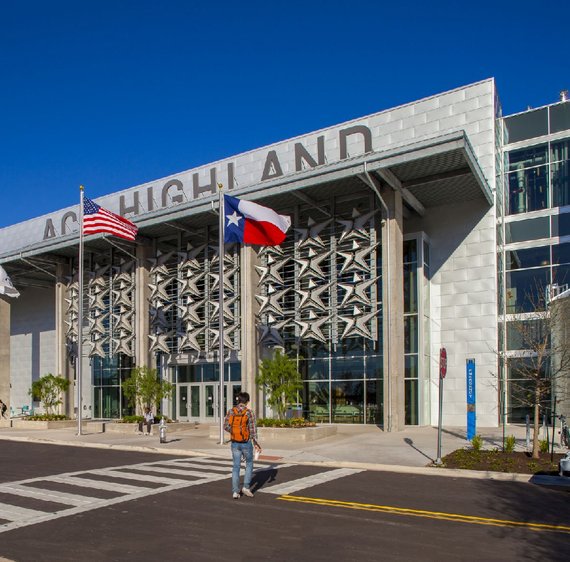
There are dozens of other examples of mall rehab too, according to Dunham-Jones.
For instance, many abandoned malls have found new life hosting churches, whether temporarily or after undergoing extensive facelifts. The Euclid Square mall in Ohio has been featured many photo blogs of abandoned malls. It’s still empty, but the mall rents out space to 24 separate Christian congregations that couldn’t otherwise afford their own church buildings.
After a Dillard’s closed in 2005, the Lexington Mall in Lexington, Kentucky, had been in disrepair. The Southland Christian Church bought the mall for $8.1 million in 2010, and architects retrofitted it to hold a 52,000-square-foot auditorium and church offices, which opened in 2013. Much of the former Dillard’s space is now used for a nursery, school, and classrooms, and the worship center, which includes 2,800 seats.
The former Grand Village Mall in Michigan was donated to the Mars Hill Bible Church, which spent about $2.3 million on renovations. The community gathers in what it calls “the Shed,” a former anchor store, on Sunday mornings for worship. Mall-churches aren’t for everyone, especially those who like their house of worship with stained-glass windows and soothing light: Some visitors have complained that the church is hard to find and a little bleak inside, and that it has outdated bathrooms.

As the healthcare field expands and medical administrators look for large spaces with copious amounts of parking, some malls are being converted into doctor’s offices and medical centers.
An ailing mall in Jackson, Mississippi, for instance, is now a medical complex that serves low-income residents. The Jackson Medical Mall also contains specialty clinics, a college of public service, a restaurant and smoothie bar, and meeting spaces for community events. The mall has also embarked on economic-development initiatives in the same area, creating Mississippi’s only African American-owned bank next door.
Vanderbilt University Medical Center did something similar, taking over the entire second floor of the struggling 100 Oaks Mall in Nashville. Parking is easier for patients, and they’re sometimes allowed to wander allow the still-open parts of the mall with a beeper as they wait for the doctor to see them, according to the Nashville Business Journal.
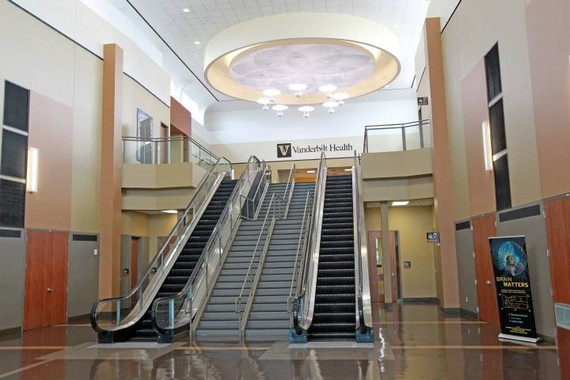
That’s the thing about repurposing malls: Because they were built with so much space, they’re often a good option for industries looking to expand. When the city government of Voorhees, New Jersey, near Philadelphia, outgrew its city hall, for example, A New Life For Dead Malls which had lost two anchors, Sears and JC Penney, in the 90s. Now, the Pennsylvania Real Estate Investment Trust is investing millions to build residential units and offices on the property.
Many towns use the land the mall was built on to create a new outdoor areas with some remnants of the malls remaining. The city of A New Life For Dead Malls, demolished nearly all of the 130,000-square-foot Northland Mall, keeping just a 30,000-square-foot building, and constructed a new building to house city hall as well as the police and fire departments in December. The project was mired in legal obstacles because it was funded by an annual $77 property-tax increase, which homeowners objected to.
Englewood, Colorado, created a new mixed-use downtown out of the Cinderella City Mall, which had been the largest mall west of the Mississippi when it opened in 1968. A light-rail line now serves the area, and the refurbished mall, called CityCenter Englewood includes residences, a Civic Center, and some stores.
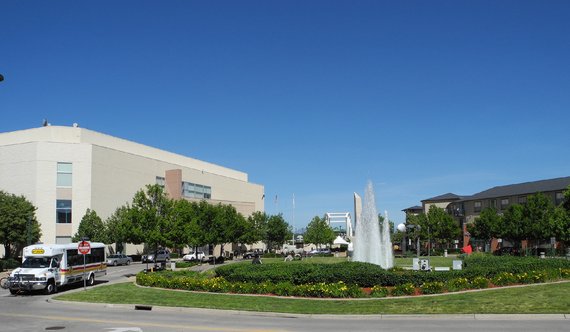
And some malls have been turned into public space used directly to benefit the surrounding community. The City Center Mall in downtown Columbus, Ohio, closed in 2009, and was converted into a park with a performance space, bocce courts, gardens, and cafes. Now developers are building upscale apartment buildings and retail on the border of the park.
Developers turned a parking lot of the Northgate Mall in Seattle into a mixed-use, walkable development that included the Thornton Creek Water Quality Channel, which takes storm-water runoff and uses it to create and nourish pools, terraces, and greenery that mimic a natural creek. The channel filters out pollution that had been feeding into a creek and damaging salmon.
The most ambitious project might be the one underway in Vancouver, Canada, which doubles down on a centrally-located mall. Last year, the Vancouver City Council approved a redevelopment plan that will seek to build a city on top of an old mall called Oakridge Center. The plan calls for 14 towers that are between nine and 44 stories tall, as well as retail, office space, and residential units.
The mall’s old website is traditional, with fashion shots of models in clothing sold at the mall’s stores. But click on the “redevelopment” link, and you’re transported to a world that looks like a New Urbanist’s utopia, with outdoor streets, greenery, and glass. Similar plans for high-rises are taking shape at malls such as Brentwood and Metrotown, which are both near Vancouver.

The Vancouver plans are based on a bet that cities will begin to expand up, and not out, as land gets more expensive and people seek walkable, transit-oriented development.
It’s not a bad bet. But if those preferences change again in 40 years, there could be a whole new set of retail buildings—and skyscrapers—to retrofit.
This feature is adopted from The Atlantic.














